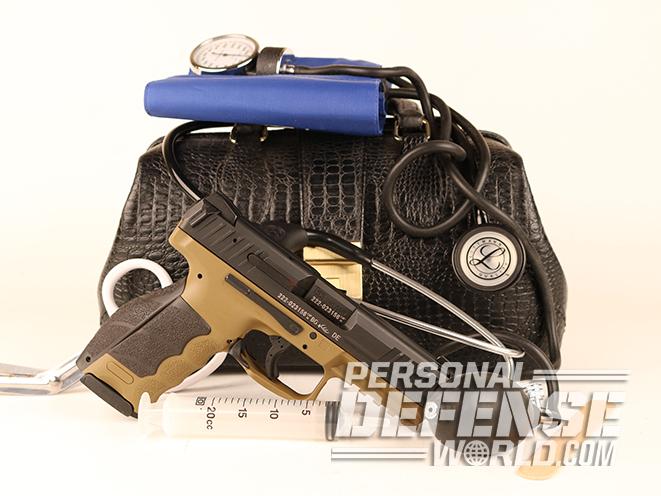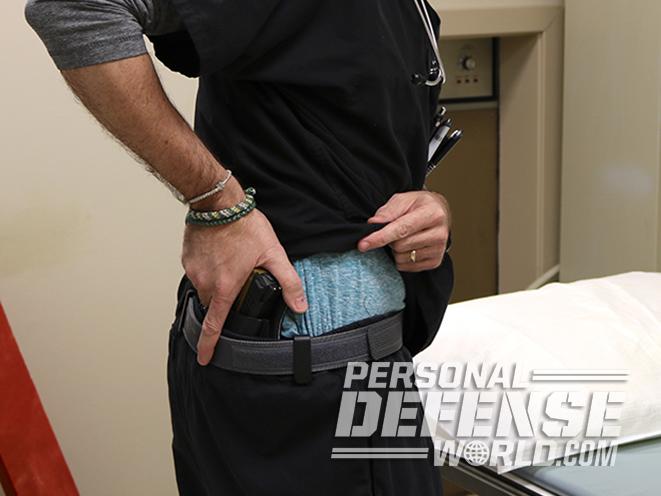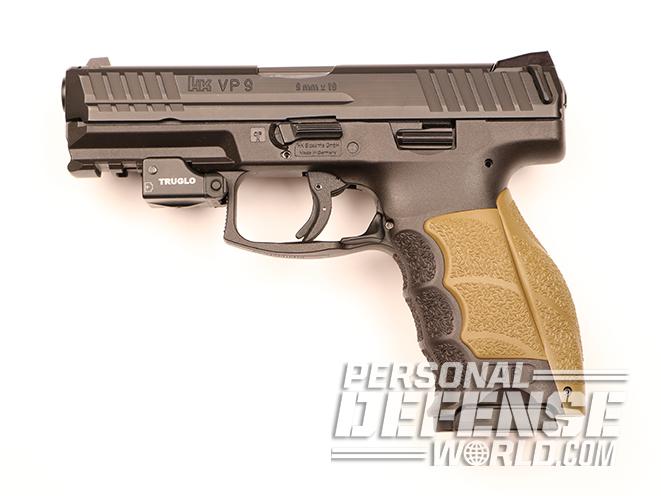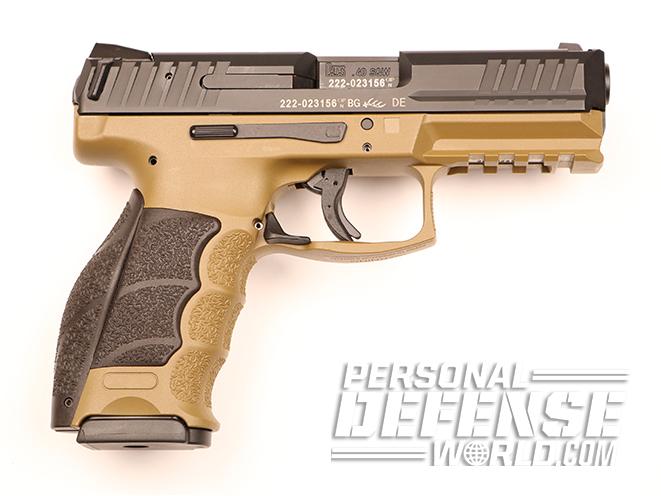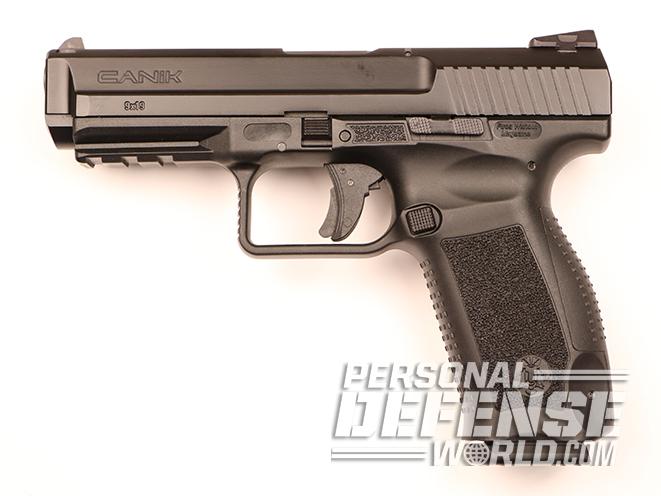The young man was yet another shot-up gangbanger—heavily muscled, covered with gang tattoos and, up until recently, a bloody mess. He was in the Surgical Intensive Care Unit (SICU), clinging to life after a gunshot wound to the torso. As a result of a herculean effort on the part of both the ER and surgical staffs at this Level 1 trauma center, it looked like this particular gladiator would live to fight another day.
His visitor signed into the waiting room and waited patiently alongside the man’s family and friends. SICU patients are, by definition, life-threateningly ill, so outside contact is kept to a minimum. When the time came for visitation, he walked into the young man’s room, produced a handgun and calmly demanded that everybody in the unit lie down on the floor. He then placed a pillow over the kid’s head and shot him in the face. The shooter calmly walked out of the hospital. He was never apprehended.
Why Should Healthcare Providers Carry?
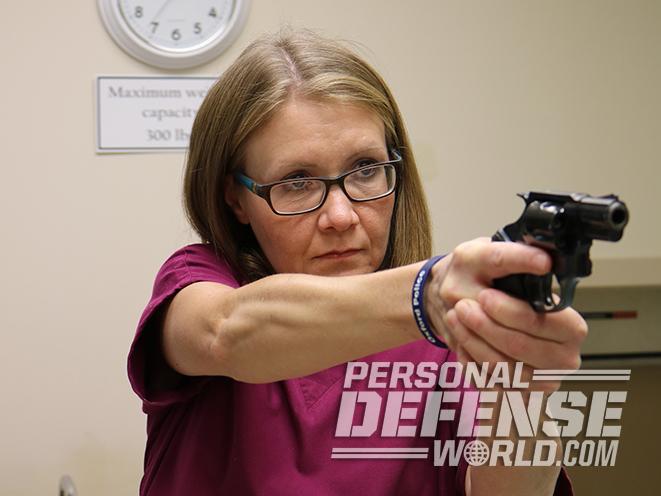
Advertisement — Continue Reading Below
Medical facilities are considered “soft targets.” Most healthcare providers are tenderhearted souls who have invested most of their adult lives training to care for those who are hurting, ill or injured. We are the folks who wade into places normal people avoid to try to snatch life back from the jaws of death. The job is physically grueling, emotionally relentless and indescribably messy.
The nexus between firearms and the medical profession is a curious thing. Some healthcare providers on the front lines of gun violence despise firearms as a matter of course. Most of these good folks feel similarly about illegal drugs. However, the fact that physicians are often injected into people’s emotional problems, hold the keys to the drug cabinet, so to speak, and find themselves blamed when things do not end well means that we can be subjected to some of our patients’ very worst behavior.
I’ll give you another example. The shooter was a 48-year-old Vietnam veteran with a long history of mental problems. He had worked at the VA hospital as a custodian after his return from Southeast Asia and knew most of the staff. He had been treated in the facility for decades.
Advertisement — Continue Reading Below
Upset over some forgotten slight, the man entered the VA hospital through the front door wielding a shotgun. He then made his way to the office of his physician and shot his doctor in the chest before turning the weapon on himself. Subsequent upgrades to security included the addition of an armed guard as well as metal detectors at the doors.
- RELATED STORY: Be Discreet – Common Sense Concealed Carry Tips & Techniques
As is the case with most security measures, the practical result is a pyrrhic peace of mind for those subjected to the inconvenience. That same unbalanced murderer with that same shotgun would likely not have much trouble shooting his way through the metal detector should he plan his attack for tomorrow.
The American Medical Association (AMA) is well known for its left-wing slant. The official position of the AMA is to renew and enhance the 1994 Assault Weapons Ban. The organization advocate banning standard-capacity magazines as well as requiring background checks for all gun transfers, a move that would criminalize the giving of firearms as gifts as well as the loaning of guns to others for lawful purposes such as hunting. What is not so commonly known is that 75 percent of American physicians are not members of the AMA.
Advertisement — Continue Reading Below
Evidence-based medicine (EBM) is the gospel from which modern medicine is preached. In a nutshell, EBM means that physicians will not offer treatments unless there is unbiased substantiation that such protocols are helpful without being harmful. It is such foundational dogma that keeps us from treating diabetes with leeches and depression with tobacco smoke enemas. EBM seems to apply to absolutely everything except gun control. Despite demonstrable evidence that the 1994 Assault Weapons Ban did not reduce crime, the AMA advocates its reinstatement on nothing stronger than intuition. Tobacco smoke enemas may not be far behind.
However, there is a pro-gun organization specifically crafted for healthcare providers. Doctors for Responsible Gun Ownership (DRGO) advocates clear-headed, unbiased policy on the medical aspects of gun violence and respects the sanctity of the Second Amendment. Its mission is to inject honesty into the gun debate.
A Paradigm Shift
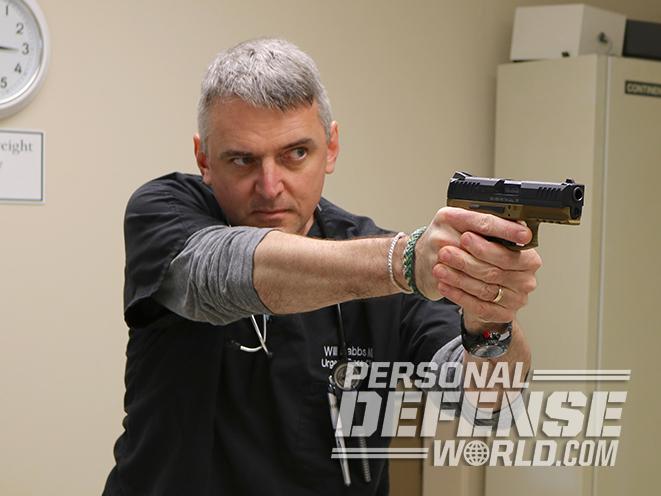
Advertisement — Continue Reading Below
In these uncertain times, we are seeing a gradual paradigm shift among many medical providers regarding their relationship to firearms. This phenomenon generally parallels the transformation we are seeing in the population at large. According to the FBI’s NICS data, Americans purchased roughly 20 million new firearms in 2015. That’s about 55,000 per day.
Two of the medical clinics in my small Southern town have held weekend concealed carry training courses for their employees. My clinic is planning a group purchase of handguns to allow anyone who might be interested access to a reliable defensive firearm. Where once physicians as a group might have been considered “soft” on gun ownership, nowadays we are frequently among the first to the range.
My modest urgent-care clinic maintains a stock of injectable narcotic drugs. I am frequently the only man in the building. Add to this that a very small but statistically significant percentage of our patients are quite literally emotionally unbalanced and you have a recipe for security problems.
Advertisement — Continue Reading Below
I have carried a concealed handgun underneath my surgical scrubs every day for more than a decade without a single patient taking notice. Typically, at least one or two of the other staff members at my facility are also armed on any given day. Considering that surgical scrubs are essentially pajamas, it is always a telling assessment to see if a new gun will ride comfortably tucked into the waistband of my work jammies.
Packing In Scrubs
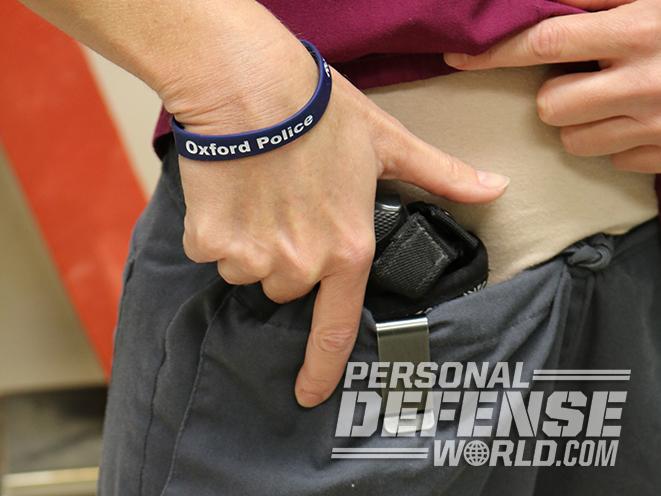
All conventional concealed carry starts with a good stiff belt. First, don a long-sleeve T-shirt and then add scrub pants. As scrubs don’t have belt loops, the belt rides loose around the waist. Then comes a proper IWB carry rig that tucks the gun in question inside these soft, comfy trousers. Lastly, the scrub shirt goes on top untucked, and no one is the wiser. One of the women at my clinic has comfortably packed a .38 revolver in a clip-on IWB holster held solely by the drawstring of her scrubs for years.
I am not a professional police officer, and the tactical challenges I might face differ markedly from those encountered by my friends in blue. I also spend a great deal of time around children. Safety is more important to me than accessibility or firepower. As a result, no matter what gun I am toting, the chamber is always empty. I carry a gun so as to be able to influence an active-shooter scenario. If the situation is an unexpected ambush, then it just wasn’t my day.
Advertisement — Continue Reading Below
Firepower Options
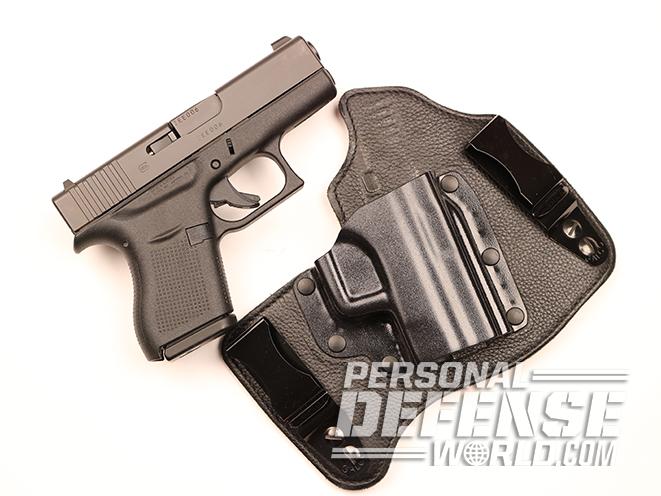
If the day will be particularly arduous or if I have a meeting wherein I will need to sit down a lot, I typically pack a Glock 43 in a Galco IWB holster. This slim little heater carries six rounds in its magazine and is compact enough to be essentially transparent. Every Glock will shoot every time, and the G43 packs all that super-cool Glock-ness into a nice tidy package.
My typical daily-carry guns all hail from Germany. The Heckler & Koch P30SK packs ten 9mm rounds in its magazine and sports the nicest concealed carry-trigger I have ever seen. The LEM (Law Enforcement Modification) trigger has a long, weightless take-up followed by a predictable break. The stubby slide and grip make for a gun that fills the hand, shoots well and doesn’t stick out all over the place. The fifth finger of my hand wraps around underneath the magazine.
More often than not I carry a full-sized HK VP40. My practical ER experience leads me to believe the penalty in weight and bulk for the .40 S&W over the 9mm is worthwhile. The cocking supports at the back end of the slide make it easy to rack. When packed into an Alien Gear IWB holster, this full-figured handgun remains comfortable enough to wear all day. The VP40 shoots great, and the imminently customizable grip panels let you fit the gun quite perfectly to your particular anatomy.
Advertisement — Continue Reading Below
My clinic staff opted for the 9mm Canik TP9SF from Century Arms when it came to buying guns as a group. The TP9SF is what would happen if a Glock 17 and a Walther P99 had a baby. The TP9SF comes as a DIY gunman kit with a decent polymer holster, a spare magazine, a magazine loader and a cleaning kit, all at a bit more than half the cost of a name-brand gun. The striker-fired trigger is at least as good as everybody else’s, and the interchangeable backstraps allow the pistol to accommodate different hand sizes. The TP9SF is one of the best values in combat handguns today.
Protecting Patients
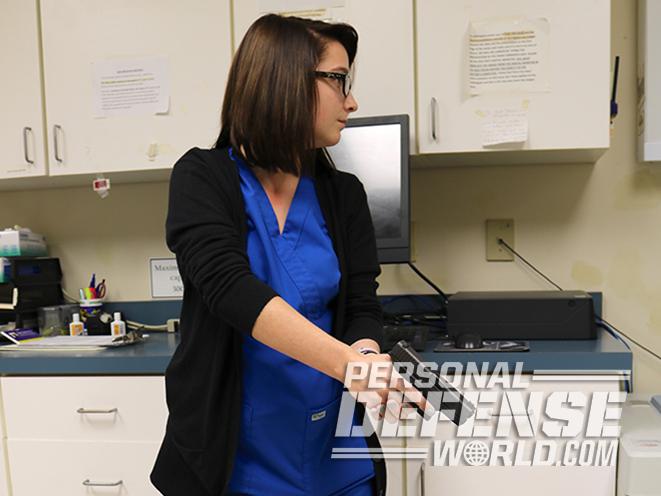
I love my patients, and it is an honor to serve them. I never want to touch my firearm while at work from now until the day I retire. However, should the unthinkable happen, I don’t want to look back and realize that I might have been able to intervene had I just been diligent enough to pack a gun consistently. A critical aspect of the Hippocratic oath is “First, do no harm.” Not unlike cancer treatments, however, sometimes in our modern age this means you must to be ready to apply a bit of precise surgical violence in pursuit of a more virtuous goal.
Advertisement — Continue Reading Below
This article was originally published in ‘Concealed Carry Handguns’ 2017. To subscribe, visit outdoorgroupstore.com.
